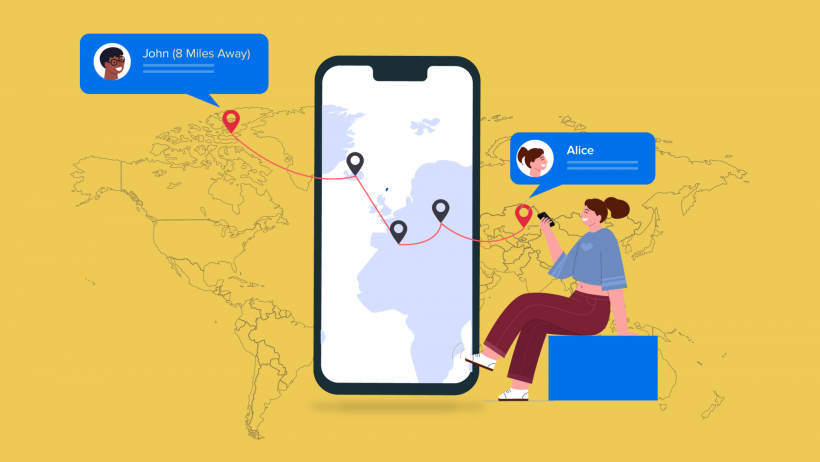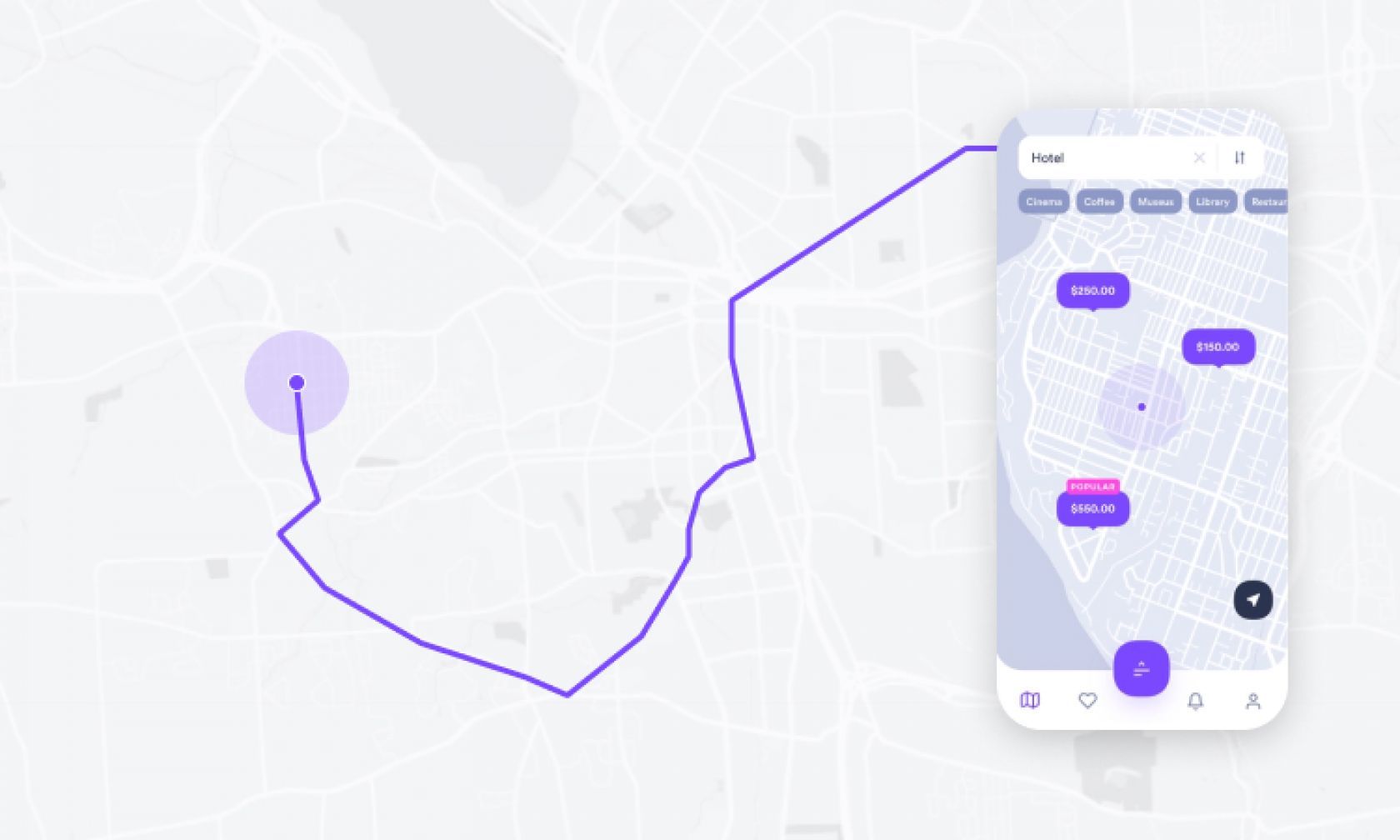Geolocation is one of the most-used features in mobile applications. If you pay attention, you’ll see it is not only used in maps and navigators buteven your phone camera these days uses this function. In addition, there are many applications for which geolocation is not a feature but the main function. In this article we will talk about the ins-and-outs of a geolocation mobile application: on what principles it uses to work and whether or not it is difficult to develop it.
What is a Geolocation App?
/_1.png)
Any application that uses your location can be considered as ‘geolocation’. For example, when Instagram determines your location and displaysit under the photo, that is geolocation. The same technology is used by the hugely popular game Pokemon Go. Naturally, maps and other navigation apps work upon similar principles.
How geolocation apps work
To determine the location of the user a device can use various services: GPS, LBS, WiFi, Cell ID, BLE etc.
GPS is familiar to most people and isbased on satellite communication. Your device transmits data to asatellite and accordinglydetermines your location.
LBS geolocation, or Location Based Services, is another type of navigation that can be used to determine your location. This works in places inaccessible to GPS, such as the subwayor in underground parking.
Geolocation using WiFi, however,is not so simple.For this technology it is required to first link the location of Wi-Fi networks to the satellite map. Then you can navigate independently of GPS.
Cell ID determines location using cell towers. Although the accuracy of this is questionable , it is suitable for large cities with a high density of towers.
BLE, or beacons, work via Bluetooth and allow you to detect devices within the coverage area of a beacon. This technology is not yet used for navigation. However, there is a certain category of geolocation applications using BLE.
Types of Geolocation Apps
We have mentioned that geolocation is used by many different businesses and different types of applications, all with different purposes and harnessing different technologies. Let's now take a look at which geolocation mobile applications are on the market today. It’s a given that many of them are also installed on your smartphone.
Navigation and maps
/_2%20(1).png)
Any application that helps you toroute between any point A and point B is based on geolocation functionality. Such applications usually use GPS or LBS to determine the most accurate location of the user during the entire route. The most popular of these types of applications are Google Maps, Apple Maps, Waze.
Social applications
There are several categories among social applications:
- Social networks where you can mark your location on posts and content;
- Check-in of applications where you mark the places you have visited;
- Dating apps showing you other users nearby.
All these examples are based on geolocation, and each application can use different technology. Examples may be Instagram, FaceBook, Badoo, Tinder and others.
Taxi and delivery services
Thanks to geolocation, you can conveniently call a car without spending time entering your current address. GPS provides the ability to accurately track arrival time and current location of the driver, whether it is a taxi or a delivery. Among such applications are Uklon, Amazon, Uber and so on. All of them use geolocation to improve user experience.
Fitness applications
Some fitness and sport apps use geolocation to obtain more accurate data on your physical activity. Not only the number of steps is taken into account, but also the distance covered on the map, as well as the speed of movement, which allows you to optimally calculate calories and activity.
Augmented Reality
AR in mobile games allows a unique experience when objects in the game seem to come to life on the streets of your city or in your home, right in front of you. One of the most popular games of this type was Pokemon Go, which broke the Internet a few years ago.
Weather forecast
You've noticed that the widget with the weather forecast always shows you up-to-date data based on where you are. Weather applications also use geolocation data so that you don’t have to look for the forecast yourself. Thanks to this, you can simply unlock your smartphone to get better weather data than you would by looking out the window. Usually such geolocation applications are installed automatically on your smartphone, and the widget is usually displayed on the main screen.
Guided Annexes
When you are going on a trip is when you should try using one of these applications. They display all sights and landmarks on the map, as well as other necessary facilities, such as:cafes, gas stations, public toilets and so on. Thanks to these guides, you can more carefully plan your excursion and avoid getting lost in an unfamiliar city. Moreover, they often offer ready-made excursion routes, as well as information in attractions with a click.
Applications in retailing
Not only e-commerce benefits from applications, but offline retail too. Informing users and communicating with them more closely, thanks to beacon technology, apps send users alerts when they pass by the store, attractingcustomers even if they did not plan to visit.
Difficulties in developing geolocation applications
The development of geolocation services requires special attention and approach because it can be a difficult task. For a positive user experience and for the app to be profitable, it is necessary to carefully consider the details and take into account all possible difficulties. Among the aspects that require special attention in development, we will highlight the following:
Use of device resources: geolocation applications can often bebe poorly optimized and run too slowly. This negatively affects the user experience;
Autonomy: when selecting geolocation technologies, it is necessary to take into account the "survivability" of the smartphone - namely, its battery and energy efficiency. The GPS module can quickly use-upthe device’s charge, so it is necessary to provide for the possibility of the application to work without access to the network.
Interface detail: since some geolocation applications (such as maps) contain a huge amount of information at different scales, the design of such interfaces requires special attention;
Testing: it is often difficult to check the operation of geolocation until the late stages of development. Therefore, testing continues after release.Thiscomplicates the project itselfand communication with users in the first months.
Cross-platform. The development of a universal geolocation application for Android and IOS can be made difficult by the problems of integration with native APIs for cartography. Sometimes the best option is native development for each platform.
Costs and terms
/_3.png)
As you can see, the types of applications, as well as the geolocation technologies used in them, can vary drastically. Accordingly, the cost and timing of development for each application will also be different and depend on many factors. The main ones are: the range and complexity of functionality, the structure and architecture of the application, the platform for which the development is carried out, and the availability of engagement from the customer.
Some applications work with geolocation from the get-go (maps, guides), while others may include it as one of many other functions (social networks, fitness or augmented reality), so it is impossible to estimate cost and terms without further information.
If you have ideas for developing an application, leave a request on the website. Our manager will call you back, ask a number of clarifying questions and will be able to provide you thedetails on the cost and timing of development. Look forward to hearing from you!


